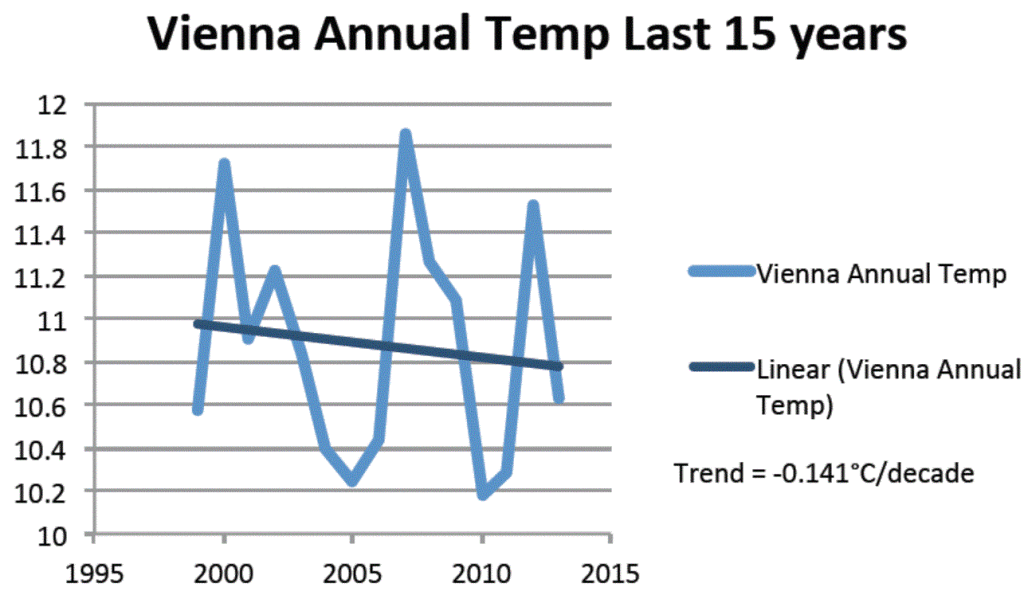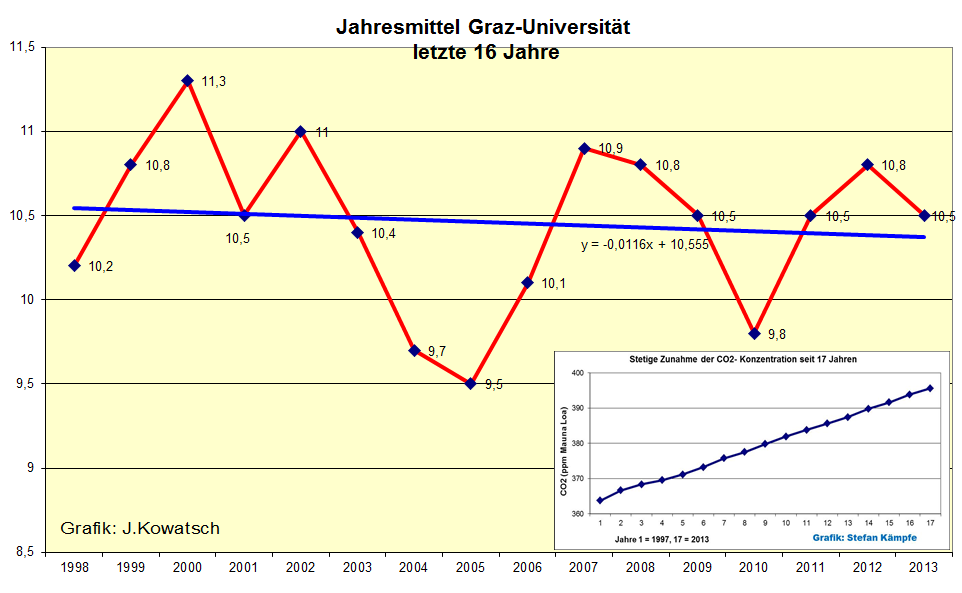UPDATE: Ed Caryl provided the following:
Based on GISS data
========================================
Even though IPCC climate models and expected climate trends have proven themselves to be completely false and useless, see here and here, parts of the Austrian media and state sector have no qualms using them, and in doing so they are misleading the public.
A recent example is the climate-alarmist Vienna-based Der Standard online daily in a recent piece titled: Climate in Vienna: More heat days, new plants.
The whole premise of the story is based on the climate models being right, which in fact today we know they have been universally wrong.
Palm trees in Vienna in a few decades!
In the article written by
Minkin and Schilly also warn that Vienna is going to be hot in the future, all exacerbated by the urban heat island effect, citing “a new Austrian expert report on climate change“.
In 1910 there were only two heat days – i.e. temperatures over 30°C. In 2000 already 17 were measured.”
Der Standard also looks very deeply into the climate crystal ball…all the way to the year 2070 to 2100. Minkin and Schilly write:
For the period of 2070 to 2100 researchers anticipate a rise to more than 35 heat days per year on average. At the same time nights in Vienna will cool down less.”
Moreover, foreign plants will begin their invasion and displace domestic ones, the experts warn.
Slight cooling over the last 16 years
So with all the warnings of more unbearable heat days in the future, one might assume that temperatures in Austria must be currently on the rise. I searched the Internet for the temperature data series for Vienna, but unfortunately I wasn’t successful finding it. So I contacted the European Institute for Climate and Energy to see if they might be able to help out. They answered promptly by e-mail (slightly paraphrased):
Unfortunately we do not have the more recent data because the Austrian Weather Service does not make them public, only up to 2003. That’s why it’s not possible to show the last 15 years graphically, and so climatologists in Austria can claim whatever they want.”
Fortunately, EIKE was able to provide the recent data for Graz city center. Here we see despite the urban location there’s been a slight cooling.
Mean annual temperature for Graz city center over the last 16 years.
The trend in Graz matches the overall trend of a slight cooling over central Europe over the last two decades.
So with the IPCC models having performed so horrendously, and in view of the fact there has been no warming trend in Austria for 16 years, it is truly a mystery how anyone could claim that summer heat days will just keep on rising linearly until the end of the century.
When the models are failures, then the future projections based on them are worthless.







My grandpa always told me about beautiful hot summers in early 1900’s. While I don’t doubt the number of heat days in Vienna in 1910 and 2000, a 10-year average would be more representative – does anybody have these data? And is Vienna immune to an Urban Heat Island effect?
They surely have an Urban Heat Island – but one that stays mostly static, as European cities are not growing fast ATM.
The coming gas cutoff by Russia should do something about the EU’s UHI effect.
Static for (almost) 100 years? BTW, that caught my attention .. why 1910 instead of 1900? Do you smell a rat as well?
Well static in the present. From 1900 to 1940 Europe had a population explosion (a “youth bulge”; some excess population was shedded in WW1 but more in WW2 ) and cities grew quickly during that time.
Anecdotally speaking ( i.e. no actual figures ): Vienna has had a very mild winter 2013/14 and has had very pleasant weather all this year. What the locals have noticed is that the summers have been very hot in the flat lands ( Vienna, Lower Austria, Burgenland ) for the last 4 years or so, touching 40degrees at times. Basically blocking high pressure fronts have been sitting over the north-east of the country ( plus Czech/Slovakia/Western Hungary) pushing up the temperatures. Rainfall is limited to big storms.
Strangely, Graz is probably not a very good choice of analogue for Vienna, because it is separated by hills and the climate is a bit different. Try looking for graphs for Pressburg ( I mean Bratislava ) as that is just across the Danube and is more like Vienna than Graz.